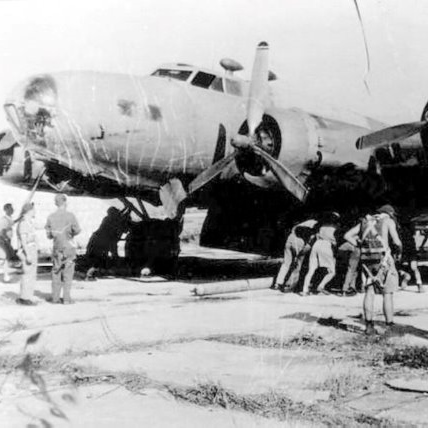click to dowload our latest edition
CLICK HERE TO SUBSCRIBE TO OUR NEWSLETTER


Published
7 years agoon
By
adminROBYN SASSEN
In 1998, in commemoration of Israel’s 50th anniversary, several South African-based veterans of Israel’s wars were interviewed for an article in the journal Jewish Affairs. There was a similar ring to many of their stories. Much like “Tuksie” Blau and Joe Katzew – who were both 15-year-olds during the time of the Second World War – bluffed their way into the SA Air Force to fight in the Second World War, although legally they were much too young. By 1947, they were skilled and gung-ho to do what they needed, for the burgeoning Jewish State.
But for the late Justice Cecil Margo, who was already an adult and had served with merit in the Second World War in the South African Air Force, it was a different story.
Israel’s Minister of Defence and Israel’s first prime minister, David Ben-Gurion, sat up and took notice of Margo, who had more than 100 successful operational raids under his belt and know-how when it came to tactical air warfare. This was all from operations during the Second World War.
In 1948, Bernard Gering, chairman of the SA Zionist Federation, approached Margo with a personal request from Ben-Gurion. The IAF at the time consisted of a motley bunch of volunteers from the Diaspora with much enthusiasm, but virtually no direction.
Golden Acres resident Ellie Isserow, also associated with the IAF, recalls how during that time “everybody was their own boss. Everybody was their own warlord… there was no order.”
Margo – who passed away in 2000 – recalled how he immediately left for Israel, with Trevor Sussman, who had been a bomber pilot during the Second World War.
Margo could see how the IAF’s disorganisation left enemy air forces at an advantage. They were better equipped and they were more organised. He explained the IAF’s faults: “The selection of targets, the type of aircraft, the time of day, and the type of tactics were not correct.”
The type of aircraft was an issue too: Many volunteers flew Piper Cubs, which, said Tim Michel, another late war veteran, were too light for aerial warfare.
Further, many planes had bombsights installed that were designed for infantry, not aircraft. Without a great deal of skill – and a good deal of luck – these pilots could easily have shot off their own aircrafts’ tails, a situation which befell SA volunteer Lionel Bloch.
Michel recalled that Bloch was “strafing Syrian troops in a Czech-built Messerschmitt-109 in the Mishmar Hayarden area, when he suddenly disappeared, having shot himself down.”
Not only was equipment in short supply, bombs and parachutes were, too. The late Manny Feldman – also in the IAF in its early years – remembered how the men improvised. Instead of bombs, they threw empty bottles from their cockpits. The rapidly descending bottles would emit a whistle similar to that made by a conventional bomb.
Creative bluff tactics were resorted to: Katzew described “bomb-chucking” – where bombs were thrown onto enemy territory through the aircraft’s windows.
They also rigged loudspeakers along the front of an aircraft, amplifying, the soundtrack from the 1943 British Intelligence-produced film, Desert Victory, on the battle of El Alamein. This noise was spliced with that of rifle firing and, believe it or not, the racket of Purim graggers!
Margo offered many suggestions to Ben-Gurion – from accessing middle type aircraft, to restructuring ranks, which the leader totally supported. Ben-Gurion even offered Margo the command of the IAF. Taken aback by this offer, Margo returned to South Africa, to think about it. There, with Sussman, he established a flying school in Germiston on the East Rand, for the training of young men to be pilots for Israel combat.
Margo – who became the South African judge who presided over the investigation into plane crashes which saw the deaths of Samora Machel of Mozambique and all the passengers on the Helderberg aircraft in the 1980s – also referred to the need for radar technology in the IAF.
That’s not completely true, says Isserow: he argued that he and his peers did indeed build a radar system of sorts in Squadron 505, at the Weizmann Institute, he remembers, referring to the radio ham skills of the late Maurice Ostroff.
“For lack of a suitable electric motor, a contraption comprising bicycle pedals, sprockets and a chain had been built, enabling the antenna to be rotated by hand.”
After consideration, Margo decided not to head the IAF. The Machal (acronym for Hebrew term for Volunteers from outside Israel) website deems Margo “a frustrated visionary”, compelled to leave the fledgling IAF in other hands.
By 1956 and the Suez Crisis, the IAF was much better organised – there were fewer volunteers and the IAF had taken on its own momentum, by then. France was a major supplier of warplanes to Israel until before the Six Day War in 1967.
It was a mix of strategy, know-how and hard work that saw the continued development of the IAF, through Israel’s war-troubled history. While America supplied war aircraft to Israel after the Yom Kippur War, Israel has designed and produced its own war aircraft since the 1990s.
Many of the volunteers decided, after their experience in 1948, to go on aliyah. Others returned to South Africa, and continued their lives in the knowledge that they’d played a role in helping Israel.

clive gold
May 8, 2017 at 4:26 am
‘One glaring omission is the name of \”Smokey\” Simon who is still living in Israel’